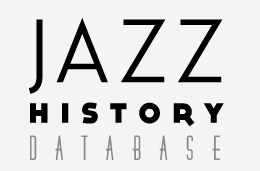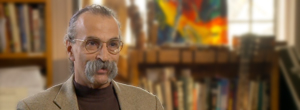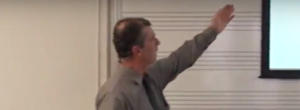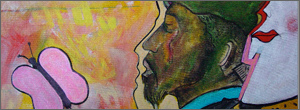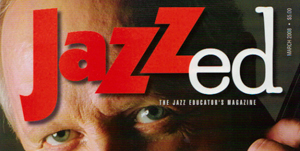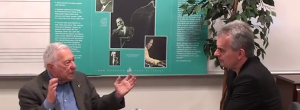 By Chet Williamson:
By Chet Williamson:
Francis “Frank” W. Capp
DOB: August 20, 1931
Parents: Francesco Cappuccio (Messina, Sicily) and Elizabeth (Barone from Florence, Italy).
Instrument: Drums, tympani, bells, and percussion
Education: Dartmouth Street School, Commerce High School (1949), Boston University
Private Instruction: Self-taught; rudiments of martial drumming with Joe Flynn, American Legion Drum Corps, and one lesson with Al Mercury and another with Joe Nozzolilio.
Worcester Playing Experience: The American Legion Drum Corps., Paul Rhode, Gretchen Morrow, Emil Haddad, Bob Simonelli Sr., Barney Price, Howie Jefferson, Tony Gerari, and Boots Mussulli
Playing experience: Stan Kenton (1951), Neal Hefti (1952), Peggy Lee (1953-54), Dorothy Dandridge, Betty Hutton, Ella Fitzgerald, Billy May, Harry James, and Charlie Barnet (1955-56); Stan Getz, Red Mitchell, Marty Paich, Art Pepper, and Dave Pell (1953-1956 and joined the Andre Previn Trio in 1957 to 1964), began recording dates with Benny Goodman (1958), Terry Gibbs (1960), Stan Kenton and Turk Murphy (1961), Barney Kessel (1965). Throughout the 1960s, Capp performed on countless radio and television shows, as well as film soundtracks.
In the 1970s, Capp began working regularly with singers Ernestine Anderson and Joe Williams, as well as instrumentalist Dave Pell and Bill Perry (into the 1990s). In 1975, Capp became a co-leader of a big band with pianist Nat Pierce, first as the Capp-Pierce Orchestra, and later the Juggernaut. Stars in that band include Snooky Young, Blue Mitchell, Marshall Royal, and Plas Johnson. The group recorded extensively for Concord. Throughout the years, Capp also gigged and recorded with Joe Pass, Chet Baker, Frank Sinatra, Dean Martin, Lena Horne, and Tony Bennett, among many others, as well as studio dates with the Beach Boys (Pet Sounds), Monkees (“Mary, Mary”) and the Ventures (“Wipe Out” w/Hal Blaine).
Select Discography: Sinatra ’65 (w/Frank Sinatra), Keely Sings Sinatra, (w/Keely Smith), Previn Plays My Fair Lady (w/Andre Previn on Columbia), Five Brothers (w/the Herbie Harper Quintet on VSOP), Marty Paich (w/Art Pepper), A Man Who Used to Be (w/Chet Baker), Hello Reverend (w/Bill Perry on Concord), More than 300 albums.
Tours and Highlights: Kenton Band at Mechanics Hall in 1952
Television shows: Steve Allen Show, Joey Bishop Show, Red Skeleton, Green Acres, Moonlighting, Hanna Barbera cartoons.
Filmography: Porgy and Bess, My Fair Lady, Two for the Seesaw, Advise and Consent, Sayonara, Irma La Douce, Who’s Afraid of Virginia Woolf?, Gypsy, On a Clear Day, Valley of the Dolls.
Compositions: “Skull Capp”
Press quotes: “It might be thought that, inasmuch as Frank Capp is the regular drummer for my TV shows and concert appearances, etc., I might be personally prejudiced about this particular collection, but in fact, I’m not. Capp is one of the best drummers in the business; the Capp-Pierce Orchestra can swing with best.” – Steve Allen.
Keeping Worcester time with Frank Capp by Chet Williamson
Talk about being in the right place at the right time. Drummer Frank Capp is the poster boy for such a concept. At the age of 5 he received his first pair of drumsticks from an uncle who worked at Walberg & Auge, a Worcester-based music company that specialized in drums.
The impact of both parties on the world of jazz cannot be overestimated. Walberg was no ordinary drum shop and Capp, well, he was an extraordinary talent from his first downbeat.
Walberg & Auge as founded in 1910 by Bernard E. Walberg, who was a pioneering inventor who is said to be responsible for the creation of the hi-hat.
Capp’s contribution to the art of percussion is the very personification of a drum company’s ideal. In a career that has spanned more than seven decades, his resume runs the table from Stan Kenton to the Beach Boys, and beyond.
As a freelance studio musician in Los Angeles, Capp performed on more than 200 motion picture soundtracks including, In Like Flint, Sweet Charity, and Irma La Douce. His television credits include such disparate shows as “Green Acres,” “Donnie and Marie,” and “Moonlighting.” He also spent a decade on the “Red Skelton Show” and six years in the orchestra of the “Steve Allen Show.”
Capp’s jazz credits are immense – Stan Getz, Chet Baker, Art Pepper, et al. The singers he has supported read like a who’s who of greatness – Ella Fitzgerald, Peggy Lee, Anita O’Day, Frank Sinatra, Joe Williams, Tony Bennett, among countless others.
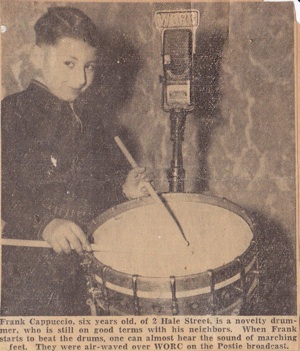 Young Frankie actually had two uncles that worked for Walberg & Auge, George and Sam Cappuccio. Both men were musicians; Sam played tuba and George was a trumpeter. It was Uncle George who gave Frankie his first pair of the sticks. In a 1990 interview with Worcester Telegram & Gazette staff writer Sibyl Farson, Capp said, “I drove my parents crazy, banging on every piece of furniture in the house.”
Young Frankie actually had two uncles that worked for Walberg & Auge, George and Sam Cappuccio. Both men were musicians; Sam played tuba and George was a trumpeter. It was Uncle George who gave Frankie his first pair of the sticks. In a 1990 interview with Worcester Telegram & Gazette staff writer Sibyl Farson, Capp said, “I drove my parents crazy, banging on every piece of furniture in the house.”
In his illustrious career, George Cappuccio was a U.S. Army Veteran of World War II and served as a trumpet player with the 181st Infantry Band and the 1st Infantry "Big Red One." (The battle was immortalized in Worcester-born director Sam Fuller’s film of the same name.) George Cappuccio played in several local groups in the Worcester area including the Grotto Band.
In a recent interview with WPI Capp noted that he became good friends with Clarence Walberg (the nephew of the company’s founder who also worked at the music store). In the 1970s the two friends traveled cross country together. See: WPI interview.
From the start, Capp’s heartbeat marched to the rhythm of drums. At the age of six he became a member of the American Legion Drum Corps. And, although he studied piano privately, Capp is basically a self-taught drummer.
“I learned rudimental drumming in my early years,” he says. “I have a little block as to what actual age I was, but I was so little that the drum was almost bigger than I was … I remember marching down Main Street. Sometimes even in the rain. You know, whenever they had parades.”
And in an April 2012 interview with the WPI Jazz Lab, Capp added, “The drum was bigger than I was … . [If] it’d start raining we’d have to put a handkerchief over drums – plastic heads hadn’t been invented, everything was cast and the minute a drum head gets wet it gets soggy.
“Our teacher, I think his name was Joe Flynn. He’s the one that really started me playing drums. He was my first teacher. It was on parade drum. We used to play all the marches, but it was just a drum and bugle corps, so we weren’t too fancy back then."
One of the highlights of his childhood was appearing on a local radio station at the age of 7. Capp told Worcester Magazine that the “street beats” helped his sense of time and coordination. The percussionist who got him away from military drumming was Al Mercury, who taught in Worcester in the late 1930s and early ‘40s. “He had a hi-hat. He played, chee-chit, cha, chee-chit,” Capp said, mimicking its rhythm. That was first so-called jazz beat I ever heard. I was captivated by it. I probably took a lesson and half with him. Then I took a lesson and half from Joe Nozzolilio. I took maybe a twenty minute lesson from each one of them.”
Capp adds that one of his failings in life has been the fact that he doesn’t like to practice. “I learn by listening, by watching and doing,” he said, with a certain didactic tone of instruction in voice.
Obviously, it never kept him from work. At this writing, Capp is 80 years-old and next month heads out on tour of Japan. His first professional work, however, happened in Worcester.
“I recall that when I still lived on Hale Street, at the foot of the hill there used to be a place called the Canadian Hall,” he said. “I did Polish- weddings there with a piano player, piano and drums. We used to play the Beer Barrel Polka or whatever. I was maybe 10 or 12 years-old."
Also around this time, Capp won an amateur contest at Hampton Beach, where family vacationed every summer. “There was a concert band. They used to play the Anvil Chorus, Glenn Miller’s arrangement, and boy that got my interest. They would have these amateur contests. I don’t remember much about this because it was my pre-teens. My folks entered me in the contest and I won."
The young drummer was bitten by the jazz bug that same year. Capp said that’s when he first heard his drum heroes, like Gene Krupa on the radio. “There was a show on during the war called Spotlight Band [Broadcasts]. It was a half hour radio show and whenever it was on I would be glued to that radio. There would be a different show every week.
In a 2001 interview with Worcester Magazine, Capp mentioned that along with the Spotlight radio broadcasts, the other thing that influenced his jazz listening was: “There were a couple of black musicians back [in Worcester] who were also very influential to me. They used to work at the Valhalla, down on Summer Street, Howie Jefferson and Barney Price.
"As a kid, I used to sneak in and listen. Back then, I didn’t know that they were black and they didn’t know I was white. There was never any racial tension in the early days of the jazz world. Ever."
At 16, while visiting New York City, he was given the opportunity to sit in with Jimmy Dorsey's orchestra. "It was such a thrill," Capp said, moved even now by the memory of how he had felt at that moment. "I decided, there and then, that playing in a big band was to be my life's ambition."
Capp went to Commerce High School, where he was a popular and active student. He was his class treasurer, and a member of the school orchestra, the band (president), the camera club, the chemistry club, and American history club. Classmates called him “Capp” and “Maestro.”
In a 2008 interview Capp was asked if he had a student band.
“When I was in high school there was a saxophone player who became one of my closest friends, his name is David Bournazian,” Capp recalled. “He was in Classical High School. He started a band. Everyone back then changed their name. It was Dave Bernie and his orchestra.
“I remember we would rehearse at the American Legion Hall. I didn’t have a set of drums. So, I was playing on the marching bass drum and a deep snare drum. I’d take the tenor drums and use them for tom-toms. Anyway, my father then bought me my first set of drums. I was about 14.”
Capp also noted that while still in high school, he started working regular gigs throughout the area.
“In my early teens, I was working ‘casuals,’ he says. “In Worcester they used to call it ‘general business.’ Out here they are called casuals. That’s private parties, weddings, dances, whatever … I used to work with a guy by the name of Paul Rhode, a saxophone player. I also worked with a pianist by the name of Gretchen Morrow. I worked with her at the Moors. This was a regular gig, like three or four nights a week. This was probably towards the end of the war.
“That was my first professional thing … It was ‘almost-jazz’ with Gretchen. The thing about Gretchen was that she could play any song and knew all the right changes. She taught me a lot.”
While still in his teens, Capp also worked with saxophonist Tony Ferris (Tony Zano’s uncle) “It was a trio,” he said. “It was clarinet, piano and drums. He recalled spending time in a rehearsal band led by Fred Holovnia as well.
“I’ll tell you what influenced me greatly was the Plymouth Theater,” Capp said. “Then they would have dances at the Auditorium. I remember I went to hear Tony Pastor’s Band there once. And Les Brown’s Band. That’s where I first saw Dave Pell. Later, I became his drummer. He’s a dear old friend now.”
Capp also reminisced about an occasional jam session at his parents’ three-decker on Hale Street.
“The Gene Krupa band was in town and we invited Buddy Wise, Frank Rosolino and Don Fagerquist to come to the house and jam with us after their job and they did.”
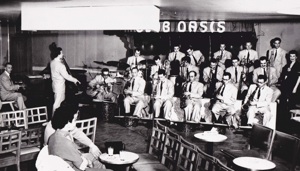 When asked if he knew trumpeter Fagerquist from the Worcester days, Capp answered, “I knew him, but by the time I got into jazz, he had already been on the road with Gene Krupa’s band. I never really worked with him back in Massachusetts. I worked with him out here with the Dave Pell Octet. He was on staff at Paramount and I was on staff at Warner’s. So we never really worked that much in town.
When asked if he knew trumpeter Fagerquist from the Worcester days, Capp answered, “I knew him, but by the time I got into jazz, he had already been on the road with Gene Krupa’s band. I never really worked with him back in Massachusetts. I worked with him out here with the Dave Pell Octet. He was on staff at Paramount and I was on staff at Warner’s. So we never really worked that much in town.
“Among trumpet players he was idolized because he played so melodically and had such great lines. He was a very highly respected trumpet player.”
After high school Capp enrolled in the music program at Boston University and continued working with Morrow to pay his way through college. Sometime around this time, through local pianist Tony Gareri, Capp met Henry “Boots” Mussulli, the legendary saxophonist who had toured and recorded with the likes of Stan Kenton, Charlie Ventura and Gene Krupa.
“What advanced my career more than anything was Boots Mussulli. I did a couple of gigs with him and he was impressed with the way I played. He asked me to come out and rehearse the big band in Milford, at the Italian American Hall.
“It was like a lab band,” Capp said. “We didn’t call it that back then because there were no such things available in that period. Today, jazz is taught in the schools and it is encouraged but back then jazz was a dirty word.”
At 19, with the help of Mussulli, Capp was hired to play in the Stan Kenton Orchestra. For a young drummer, who followed the jazz stars of the day, it was like a baseball prospect getting called up to play in the major league.
Capp picks up the story from here: “Boots and Stan were very good friends, Boots had worked in Stan’s band. Apparently, Boots was talking to Stan and Stan said I’m putting a new band together right after Christmas and I’m looking for new players. So, Boots says, ‘I got a drummer back here that I think you might like.’
“I remember, I was living on Hale Street and the phone rang and my father picked up the phone and says, ‘Some guy in California wants to talk with you. Who do you know in California?’ (I don’t know anybody.) ‘He says his name is Stan Kenton.’ That didn’t mean anything to my father, he didn’t know. So, I picked up the phone and he said, ‘Boots Mussulli said you’re an up-and-coming drummer and I’d like to give you a shot. Would you like to join the orchestra?’ I said, ‘I’m packed and ready to go.’ I was still living at home, going to school.’”
In his book Stan Kenton: This Is an Orchestra! author Michael Sparke interviewed Capp, who said, “The first thing Stan asked me was what sized cymbals I used. Stan was a cymbals freak. He liked big, loud cymbals. It’s not my idea of good sound, huge cymbals that cover everything else up, but anyway, I joined in February 1952. I came out to LA, and we rehearsed at the Florentine Gardens.”
In a 2011 interview with Michael Vosbein, president Bosphorus USA, Capp talked about his early career, studio work in LA, the Juggernaut band and contracting – “not as much fun as playing, but it paid a lot of bills.” He said that he was in his third year of study at Boston University where he was studying to be a music teacher when Kenton called.
“Stan was forming a whole new orchestra. All his famous players from the Innovations orchestra – Maynard Ferguson, Art Pepper, Shelly Mann, Milt Bernhardt – all those people wanted to stay in town and do studio work, or whatever. So Stan started a new band. That started my career, went on the road at 19, wet behind the ears, green, following the great Shelly Mann. He was a dear friend. I was one of his big admirers, because he could do anything. He could play little groups. He could play big bands. He was an inventive drummer. I liked Shelly a lot.”
Capp spent eight months with Kenton. In a 2008 interview he was asked why he left Kenton. “I remember we were up in Canada and Stan took about six guys and he said, “I’m going to have to let you guys go.” Then he took me into a room in private and said, “Frank you are going to be a great drummer one day, but you are not experienced enough to handle some of the heavy music that I’m playing. And it was; it was a heavy band - 10 brass and five saxes. “Although I have great confidence in you,” Kenton said. ‘You will be back someday. I’ll tell you what I’ve done. I found you another job with the Neal Hefti Orchestra. It’s a smaller orchestra, it only had like three trumpets, two trombones and two saxes, lighter music, easier music.’ It’s really where I should have started then I would have been more prepared for Kenton. But he had enough confidence in me.’
“I left the band two weeks later in a club in Cincinnati and I never had to take my drums off the stage. Because the next night the Hefti band came in. Then I stayed in the Hefti band quite a long while. This was towards the end of the Big Band Era. He had to break the band up. He never fired anybody. The band just had to break up. We’d be out on the road doing two nights and then having three nights off. With a band like that you have to work almost every night to make the nut.”
After Hefti, Capp returned to Worcester to work with a quartet at the Moors in Shrewsbury. “I remember we had Paul Rhode on sax and Gretchen Morrow on piano. Then I left to go on the road with Peggy Lee."
It was through Lee that Capp made a more permanent connection to Los Angeles, but it was through a gig opportunity here on the East Coast. In his interview with Michael Vosbein, Capp picks up the story: “I went into New York – into an Eastside club called La Vie en Rose -- just to see what was going on and Peggy Lee was working there. And, as I walked by the club, Pete Condoli was standing outside getting some air and he recognized me. He said, hey would you be interested in working at Ciro’s [famous Hollywood nightclub] with Peggy Lee. I said, are you kidding, I’m out of work. He said the only thing is you have to work a week up in Montreal and a week at the Latin Casino in Philly before we go to Ciro’s – like that was going to deter me from saying yes.”
Peggy Lee’s drummer at the time was Ed Shaunessy.
“He was planning to stay in New York to work the Tonight Show,” Capp said. “So I took that gig immediately and when I came out to work the gig at Ciro’s in 1953. I never went back. Peggy quit the road to make a movie called, Pete Kelly’s Blues. So we were all out of work.”
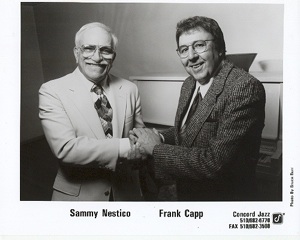 For this Worcester legend, however, work was never far away. Through famous drummer and drum maker, Remo Belli, Capp found inroads to the LA scene, which eventually led to regular gigs and studio work. And, the rest, as they say, is Frank Capp’s history.
For this Worcester legend, however, work was never far away. Through famous drummer and drum maker, Remo Belli, Capp found inroads to the LA scene, which eventually led to regular gigs and studio work. And, the rest, as they say, is Frank Capp’s history.
“I became a Local #47 [musician’s union] member and a resident of Los Angeles,” Capp recalled. “I never moved back to Worcester. I’d go back and see my family, spend a week or two but I never … from 1953 until now, California has been my residence.”
Capp’s sister Doris lives in Shrewsbury. “She’s six years older than me -- to the day. I was her sixth birthday present,” Capp cracks. “She always complained that she wanted a bicycle.”
As a drummer, Capp can best be described as melodic. Music critic Charles Champlin of the L.A. Times put it this way: “Like his idol and friend Buddy Rich, Frank Capp can fancifully be said to play ‘C Melody Drums,’ laying down a solid beat but also accenting the tune almost note for note to generate even more excitement.”
Capp is a musical drummer, who knows the form of a piece and plays with sensitivity and style required, whether in a big band or small ensemble, backing up rock singers like Sonny and Cher (“I Got You Babe.”)
When asked to elaborate on this notion of C melody drums, Capp said, “I think because when I play with a big band I play the figures. I play as melodic as I can. I set them up and play the figures, sometimes with them – whether it’s the total ensemble, just the brass, or whatever.
When asked if growing up Worcester prepared the drummer for a life in music, Capp said, “Nothing really prepares you for the road,” he admits, “until you are on the road -- that’s how you learn -- doing one-nighters and getting on a bus after a gig and going to the next town. Nothing prepares you for that. You just have to do it.
“I am thankful to be associated with all these people that helped my life and career. It all started from Worcester.”
Primary Sources
Interview with Frank Capp. Conducted by Chet Williamson on 28 Apr 2012. Audio.
Interview with Frank Capp. Conducted by Chet Williamson in May 2001. Print. Available at <http://jazzhistorydatabase.com/blog-chet/?p=34>.
Secondary Sources
Cangany, Harry and Rick Van Horn. The Great American Drums and the Companies That Made Them. Cedar Grove, NJ: Modern Drummer Publications, Inc., 1996.
Farson, Sibyl. "On a Roll With the Drums..." Worcester Telegram & Gazette, 17 Aug 1980.
Halterman, Del. Walk - Don't Run: The Story of The Ventures. N.p.: Lulu.com, 2009. Last accessed 21 June 2012. Available at <http://books.google.com/books?id=8KsyZ0W5hr0C>.
Landsdowne, Peter. "Capp Returns 'Home'". Worcester Sunday Telegram, 17 Apr 1984.
Skehan, Ev. "Jazzy City Srummer Swings Home". Worcester Gazette, 17 Apr 1984.
Skehan, Ev. "Top Drummer Coming Home to Play 'El'". Worcester Gazette, 5 May 1981.
Sparke, Michael. Stan Kenton: This Is An Orchestra! Denton, TX: University of North Texas Press, 2010.
Tubert, Jack. "2 Ex-City Favorites..." Worcester Sunday Telegram, 11 Dec 1977.
Tubert, Jack. Worcester Sunday Telegram, 15 July 1973.
Tubert, Jack. Worcester Sunday Telegram, 1 Feb 1968.
Various artists. "Victory Parade of Spotlight Bands: 1943-45 Wartime Broadcasts". Soundcraft Records, 2002. CD.
Williamson, Chet. "An Inexorable Drumming Force". Worcester Magazine, 23 May 2001.
See Also
"Frank Capp Discography and Music". CD Universe. Last accessed 21 June 2012. Available at <http://www.cduniverse.com/search/xx/music/artist/Frank+Capp/a/albums.htm>.
"Frank Capp - Filmography". IMDb. Last accessed 21 June 2012. Available at <http://www.imdb.com/name/nm0135442/filmoseries>.
"Frank Capp". IMDb. Last accessed 21 June 2012. Available at <http://www.imdb.com/name/nm0135442>.
"The Big Red One (1980)". IMDb. Last accessed 21 June 2012. Available at <http://www.imdb.com/title/tt0080437>.
Torrence, Bruce. "Ciros Nightclub". Hollywood Photograph Collection. Last accessed 21 June 2012. Available at <http://www.hollywoodphotographs.com/category/112-1/ciros-nighclub>.
"Walberg & Auge". Vintage Drum Guide: The History of Vintage Drums. Last accessed 21 June 2012. Available at <http://www.vintagesnaredrums.com/walberg_auge.html>.
